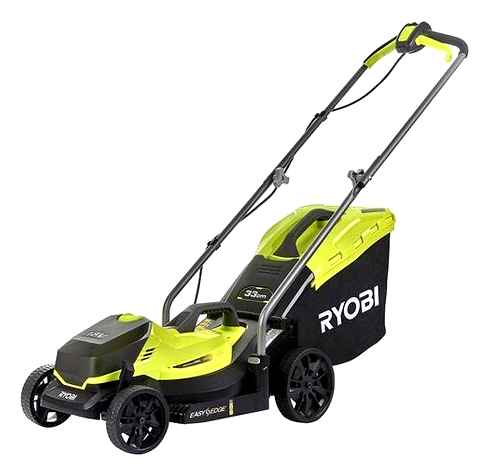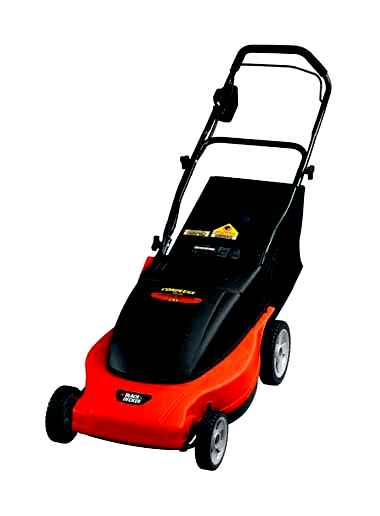Makita lawn mower cordless
18V X2 (36V) LXT Li-Ion Cordless 38 cm (15?) 3-in-1 Lawn Mower
Makita Self-Propelled Lawn Mower Vs. EGO 56V Mower: What’s the Difference?
At first glance, Makita’s self-propelled lawn mower and the EGO 56V don’t seem very different, aside from the battery pack. However, certain features of the latter make it a more popular choice.
Deck and Cutting
Undeniably, a mower’s ability to cut grass to perfection is a crucial buying factor. Makita and EGO can deliver impressive results, but the former wins this round.
While both lawn mowers have a 21-inch deck, Makita features more cutting height adjustments (ten vs. seven on the EGO) and a wider cutting height range, between 1.25 to 4 inches. EGO has a maximum height adjustment of four inches and a minimum height of 1.5 inches. This difference makes Makita a better choice for warm-season turfs that generally require a cutting height of 1.25 inches or less in spring and fall and even shorter in the growing season.
For cool-season grasses, either lawn mower would do. Depending on the season, turfs typically require a cutting height between two and three inches. You can adjust both mowers to suit the specific cool-season grass in your yard.
Power and Runtime
The next most important things to consider when buying a lawn mower – especially a battery-powered one – are the power and runtime. In this aspect, EGO’s 56 volts have the upper hand, even if the brand uses the battery’s max voltage for advertising its product.
In reality, EGO’s battery outputs about 50.4 volts. Even so, it is still more powerful than Makita’s 36V nominal voltage. EGO has more power to cut through long turf blades, at least in theory. Despite its weaker battery, Makita usually beats EGO in cutting power.
Where it fails is the runtime. In fact, the self-propelled mower from Makita promises around 40 minutes of runtime. EGO says its battery delivers up to an hour of uninterrupted work. If you have owned any battery-powered tool, you probably know you’ll get less than that from both brands. However, EGO still wins with its longer-lasting battery.
However, even if the battery lasts longer, it charges much slower than Makita. That’s because Makita’s self-propelled lawn mower uses two 18-volt 5.0Ah batteries that recharge in about 45 minutes. EGO’s 5.0Ah batteries need about 80 minutes of charge, while the 7.5Ah battery equipping the mower requires up to 145 minutes of Rapid recharging.
Both lawn mowers come with interchangeable batteries compatible with all batteries in their brand’s ecosystems.
Waste Management
When mowing a lawn, you have three possible waste management options. You can bag the clippings and dispose of them later (if the mower has a bag), discharge them on the lawn, or turn them into mulch. Mulching essentially refers to turning the grass blades into tiny shreds that can act as fertilizer and barriers against weeds and pests.
Regardless of your preference, the Makita and the EGO self-propelled lawn mowers offer mulch, bagging, and discharging. The main difference is how each mower discharges the clippings. Makita wins the round with rear discharge. EGO has side discharge, which means you’ll have to carefully plan the path to avoid obstacles such as flower beds and other lawn fixtures on which you wouldn’t want the grass clippings to land. Meanwhile, Makita allows you to take the most efficient patch and trim the grass around flower beds or sidewalks without worrying about making a mess.
Maneuverability
Typicaly of self-propelled lawn mowers, Makita and EGO are easy to maneuver. However, the latter adds features that can improve maneuverability. A wider speed range and the presence of headlights can make a difference when mowing.
As far as speed goes, EGO features a variable speed control from 0.9MPH to 3.1MPH. It is easy to understand that a higher speed means that you’ll finish the chore faster, but a lower speed actually improves control and maneuverability. This could be essential for beginners, women, and seniors.
Makita also has a variable speed control, but the narrower speed range from 1.5MPH to 3MPH makes it a better choice for more experienced users. This lawn mower also lacks headlights, which might not be essential but can improve results when mowing in low-light conditions. For storage and transport, both lawn mowers are collapsible.
Build Quality
A major difference between Makita’s self-propelled lawn mower and the EGO 56V mower is its construction. The former is designed with heavy-duty use in mind. It’s made from commercial-grade materials, including a commercial-grade steel deck and an all-metal body. Because of its superb build, Makita can resist whatever you throw at it and still provide dependable service as long as you maintain it properly.
EGO 56V mower features a steel deck, but the rest of the body is plastic. Overall, the build quality is great, but the material is weaker than metal. It can also become brittle in time, especially if you don’t have a shed and store the mower outside, under the elements.
On the bright side, the material choice sheds off some weight on the EGO mower. It weighs 54.5lbs, whereas Makita has a heft of 88.4lbs. The almost 34lbs of difference further improves EGO’s maneuverability.
Price
Makita is built from stronger materials and is designed to resist heavy use. So, it’s not surprising that it costs more than EGO. The difference is minimal, so this should be the last factor to consider when comparing these two lawn mowers.
Bosch CityMower 18
A perfect small mower from another big name. The clue is in the name and the CityMower is perfect for those with a small-to-medium lawn who’ll appreciate this mower’s compact size for storing and simple ‘everything-in-the-box’ easy of use.
It features a 32cm blade and comes with an included charger and a Bosch ‘Power For All’ 18V battery, which can be used in Bosch’s huge range of cutters, strimmers, power tools and more, delivering an impressive 300m2 range.
Mountfield MC340

Mountfield have been making quality mowers for decades and their MC340 is their mid-range all-electric model for the medium garden. There’s a larger 34cm blade, metal rust proof chassis, and a small but capable 35litre grass storage capacity.
It comes with its own bespoke powerful 40V battery – which can be used across the full range of Mountfield electric tools – delivering a range of 200m2.
Flymo EasyStore 300R
Flymo’s 300R is their take on the push-along cordless, forgoing the floating, hovering (non-grass collecting) quick ‘n’ easy mowers they’re famous for in favour of an on-trend rotary mower with full grass collection and battery power.
There’s a neat 30cm blade on the smallest model with larger 34cm and 38cm available too. It’s powered by two of Flymo’s 20V batteries (delivering its ’40V power’). There’s a 35minute run time and the 300R’s real asset is its ability to fold down extra-small for storage or placing in a car boot for transport to an allotment or othersuch.
Ryobi OLM1833B

If you’ve already bought into Ryobi’s ONE battery system (a range of over 150 power tools that all use the same battery) then the OLM1833B is a bit of a bargain. Coming without battery or charger (which are available separately of course) it’s keenly priced for such a professional bit of kit.
Ryobi make every powertool you could need for the garden and the OLM has a 33cm blade, 35litre grass catcher bag making ideal for small to medium lawns.
Ego LM2150SP Cordless Lawn Mower

Several features allowed the Ego to clinch Best Overall, no small achievement in our mower tests. First is its outstanding cut quality. Healthy grass looks like velvet after it has been mowed with the EGO. Even when the mower is used in mulching mode, we did not find clumps of accumulated clippings after the mower was finished (it’s important to specify here that these tests were performed on dry grass). We attribute that cut quality to the X-shaped blade (a design developed decades ago on Honda’s gas engine mowers) and to the smooth and unobstructed deck surface surrounding the blade.
This mower is also an excellent bagger, gathering pounds more grass per square foot of test area than most mowers. You have to be aware of that when operating this mower. Its bag will fill more quickly than you might think. Although we spend most of our time testing mowers in mulch mode, we recognize that bagging is particularly important to people who have a lot of foot traffic in parts of the yard and want to prevent grass clippings from getting dragged into the house, garage or onto patios. If that’s you, the Ego is probably a good fit for you.
Like many battery mowers today, the Ego is equipped with an all-plastic deck that will never rust, and a tilt-forward handle that also telescopically adjusts to suit the user’s height. To make it even easier to use, it has single-lever deck height adjustment with a large T-shaped handle. The combination of the spring-loaded adjustment and one of the better speed-control mechanisms we’ve seen–a simple dial that you rotate forward and back.
Since this model is sold without a battery and charger, it’s up to you how much battery to put in it. The brand recommends a battery with a minimum of 7.5 Ah of capacity, and that’s what we used to arrive at the cut area you see below. You can easily do better than that with a larger battery such as the company’s 10-Ah, a whopper of a power pack. Given that the Ego’s motor and drive system are both quite efficient, enabling it to accomplish nearly 1500 square feet of mowed surface per amp hour of battery capacity, that would translate to nearly 15,000 square feet of mowed surface with such a large battery. That’s a lot of lawn. With a 10-Ah battery, the manufacturer estimates run time as 75 minutes. That strikes us as plausible, particularly on level ground, in mulching mode.
With decades of mower testing behind us, we’ve seen just about every type of drive control imaginable. It’s difficult for us to assess these, since what one person finds comfortable someone else may not. We found the Ego’s dial-adjusted speed control (the company calls it Touch Drive) to be simple and intuitive. Move the dial forward with your left or right thumb to increase speed. Move it back to decrease. The slowest speed is a leisurely pace (.9 mph), the top speed requires a comfortably-fast walk.
The Ego is powerful, fun to operate, and cuts so well—it’s difficult to find anything to complain about. We suppose its big batteries could use a handle (like the Toro) but at least they are well shaped and have a lot of rubber-coated surface, to promote a good grip.